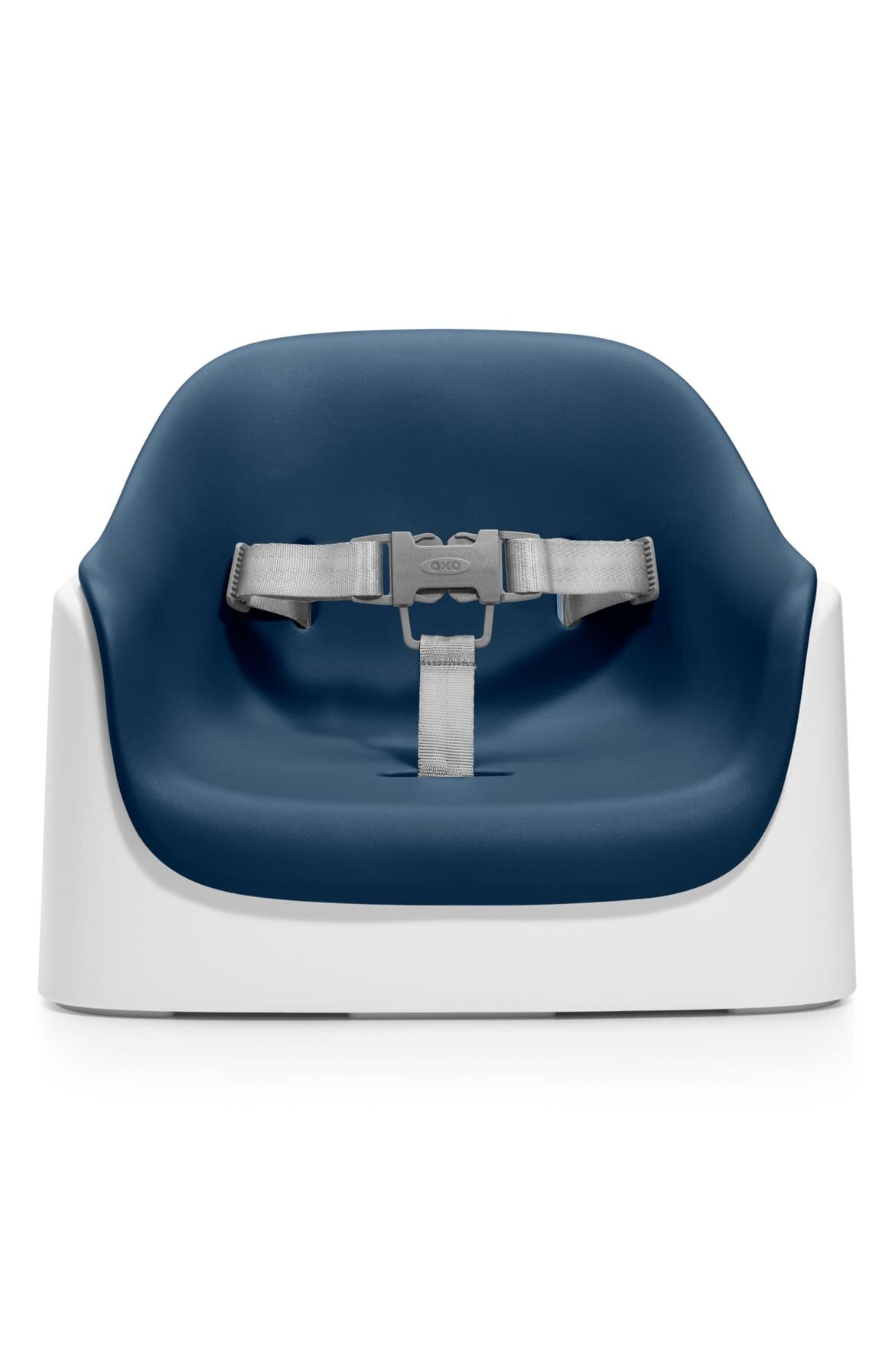OXO NEST BOOSTER SEAT
tackling a supply chain problem through complex CAD surfacing
2018
SMART DESIGN
INDUSTRIAL DESIGN
About
The OXO Nest Booster Seat is loved by children and parents alike. However, OXO ran into a shipping issue that compromised quality and undercut the success of an otherwise great product.
During import, the heat in shipping containers caused the EVA foam to shrink. Since the EVA foam seat was stretched over the edge of the frame and glued, the shrinkage caused the glue to fail and the seat to separate from the frame, causing a safety hazard that required a recall.
My task was to accommodate a +/- 4% shrink rate in the EVA during molding and transport.
Design Strategy
The design strategy was to keep the seating surface while creating “winged” edges that would hide a gap incase of any shrinkage. I built a new body shape in CAD first, then iterated with several rough CAD models to see how much
One key feature of the seat is the cushioned calf rest on the front edge. We wanted to keep this front cushion overhang, and have the other 3 sides float to accommodate any gap do to sizing inconsistencies.
Accommodating a +/- 4% Tolerance
+4% sits edge to edge with the outer frame of the chair
nominal has a slightly larger plastic “framing” around the cushion
-4% stretches to fit a child comfortably














